Abstract
Six healthy subjects were studied on two occasions. Graded bolus injections of isoprenaline sulphate were given intravenously and control dose-response curves were drawn for the changes in heart rate and blood pressure. In a random order each subject received an intravenous infusion of either propranolol or practolol and further dose-response curves were constructed PRE- and POST-atropine (0.04 mg/kg). Exercise tachycardia was reduced 26.1 +/- 2.7% by propranolol and this was not significantly different from the reduction by practolol (21.2 +/- 1.9%). Propranolol attenuated the isoprenaline tachycardia (dose ratio 43.7) and after atropinisation the dose ratio was not significantly altered (41.1). Practolol also attenuated the isoprenaline tachycardia (dose ratio 4.4) but after atropinisation the dose ratio was significantly increased to 8.8, though this remained significantly less than the dose ratio for propranolol. At a heart rate increase of 25 beats/min, the isoprenaline-induced control fall in mean blood pressure was 9-11 mm Hg. After propranolol administration this fall was converted to a small increase of + 2.3 +/- 1.3 mm Hg. Following practolol, however, the mean blood pressure reduction was 19.7 +/- 2.9 mm Hg. Practolol did not significantly block the isoprenaline-induced fall in diastolic pressure. The difference in potency of propranolol and practolol, demonstrated by their effect on isoprenaline induced tachycardia at doses shown to have equal effects on exercise tachycardia, is contributed to but not fully explained by the reflex withdrawal of cardiac vagal tone which occurs with cardioselective but not non-selective antagonists.
Full text
PDF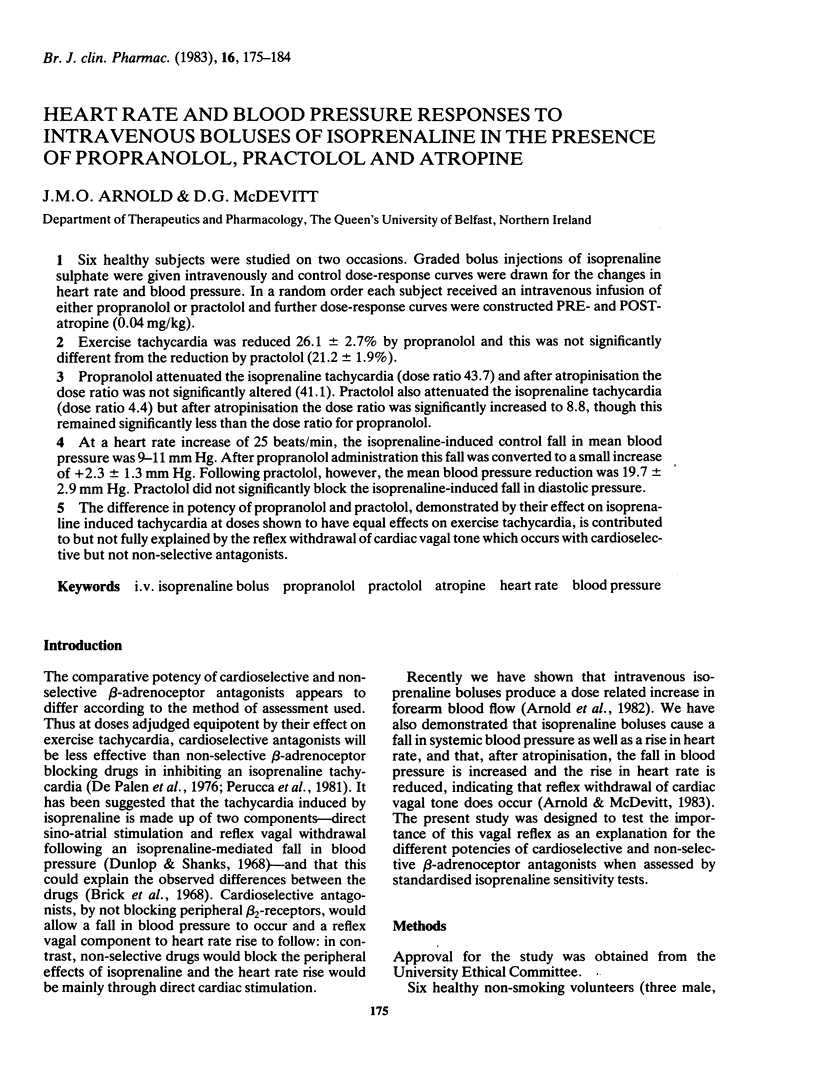
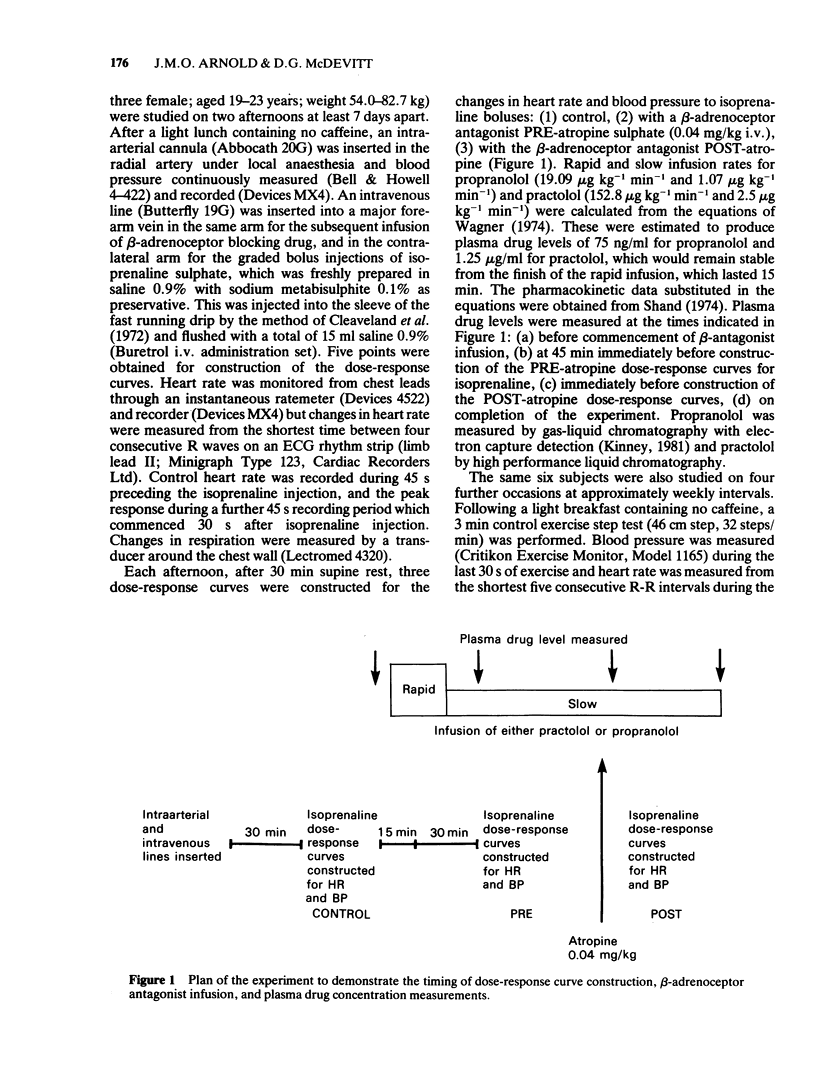
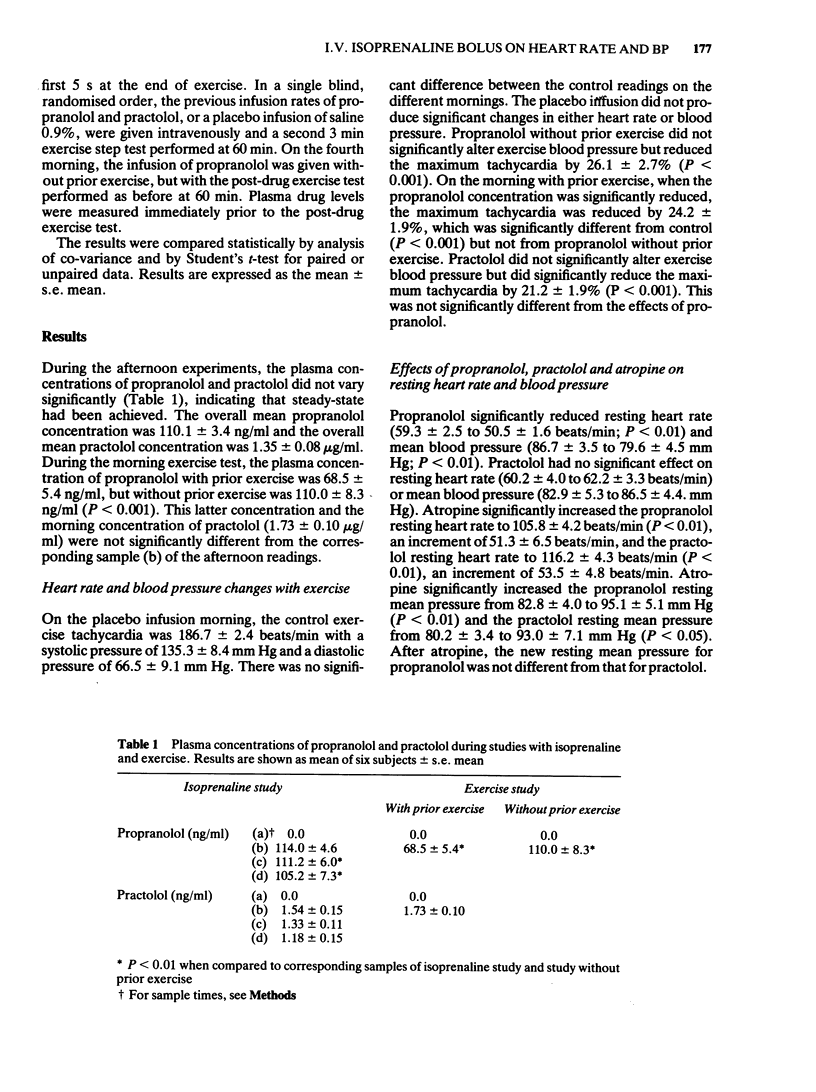

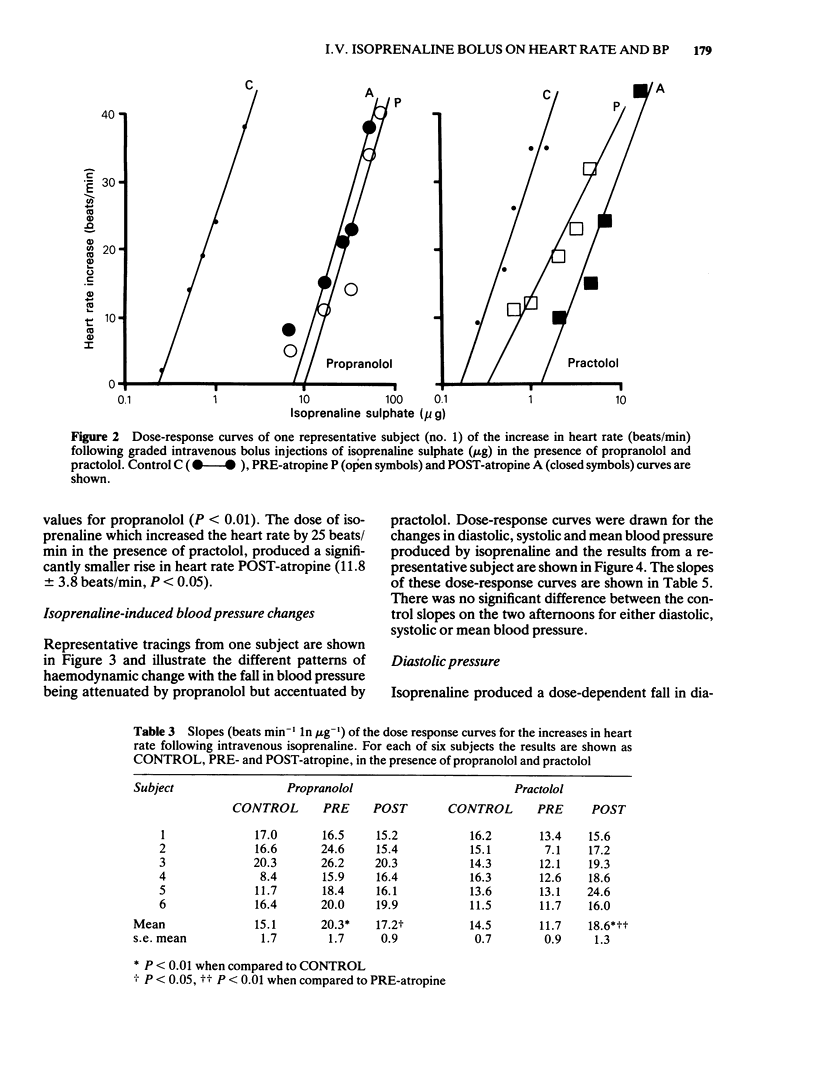
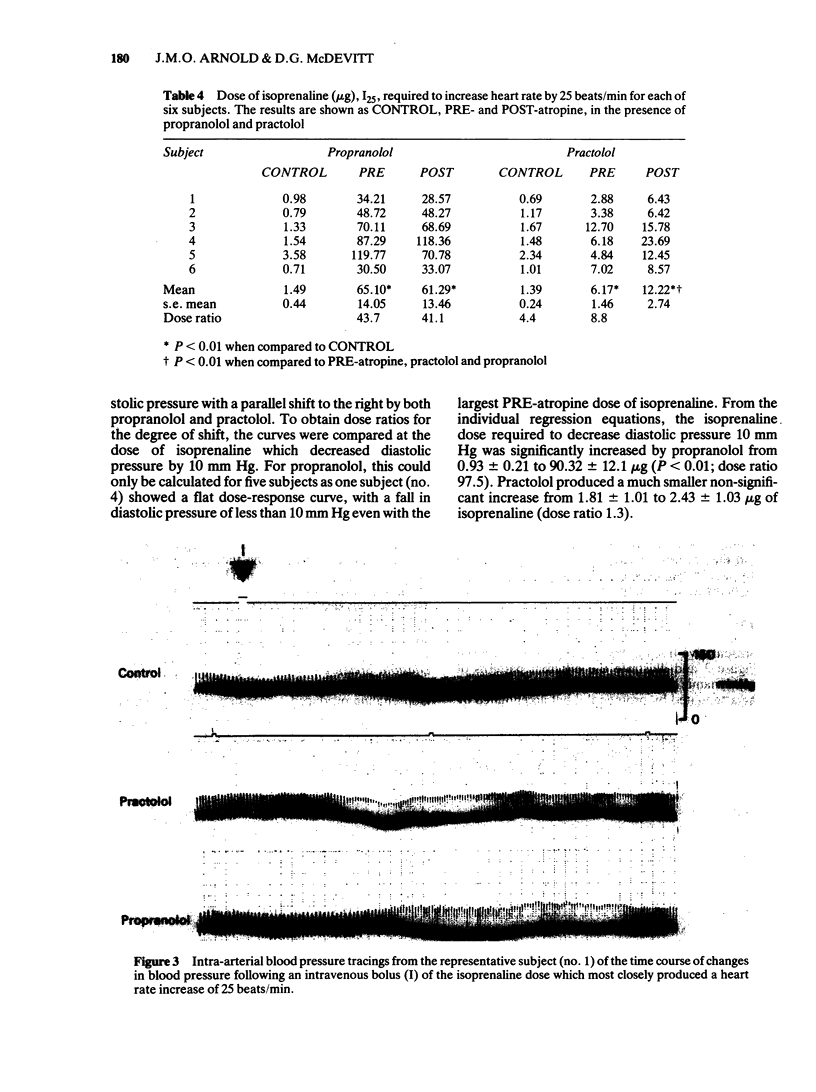


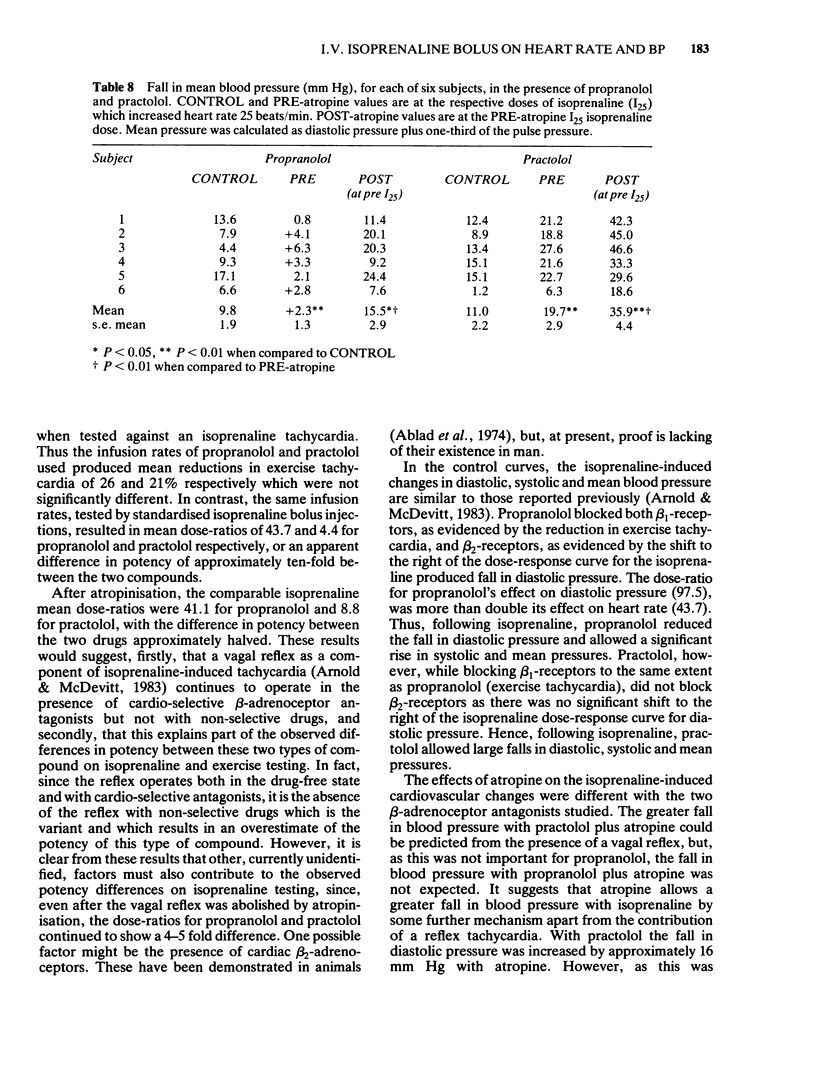
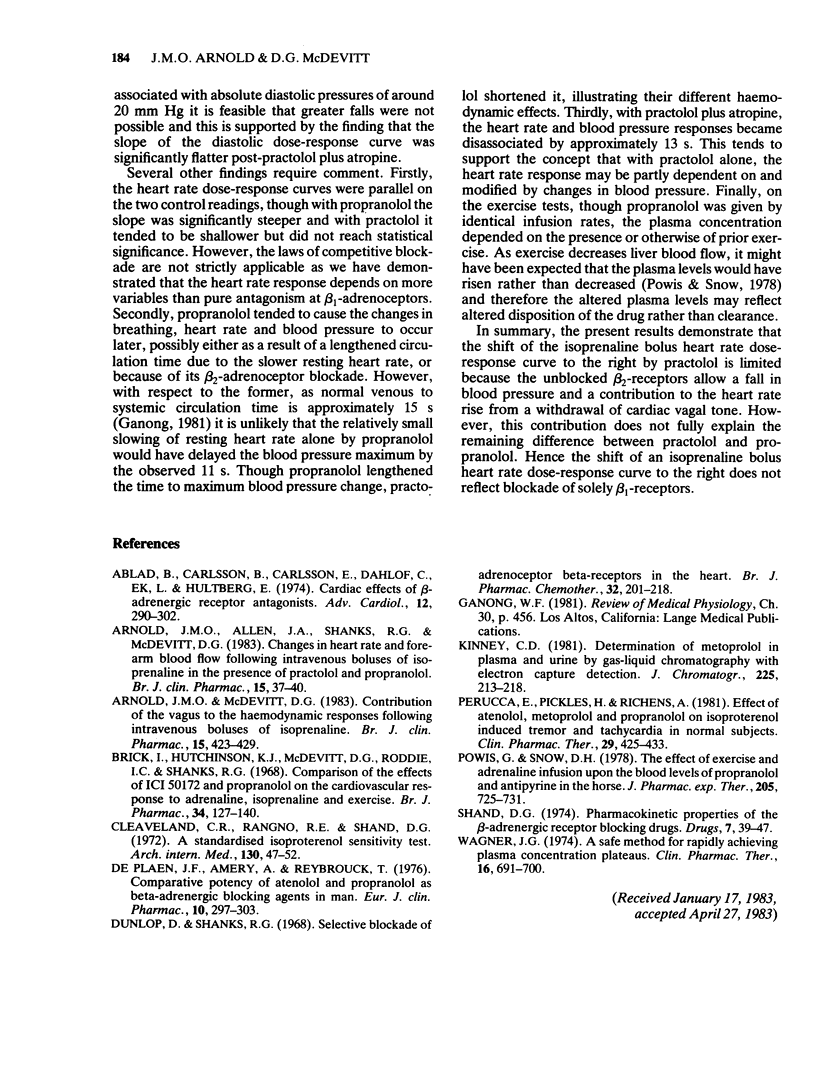
Selected References
These references are in PubMed. This may not be the complete list of references from this article.
- Ablad B., Carlsson B., Carlsson E., Dahlöf C., Ek L., Hultberg E. Cardiac effects of beta-adrenergic receptor antagonists. Adv Cardiol. 1974;12(0):290–302. doi: 10.1159/000395473. [DOI] [PubMed] [Google Scholar]
- Arnold J. M., Allen J. A., Shanks R. G., McDevitt D. G. Changes in heart rate and forearm blood flow following intravenous boluses of isoprenaline in the presence of practolol and propranolol. Br J Clin Pharmacol. 1983 Jan;15(1):37–40. doi: 10.1111/j.1365-2125.1983.tb01460.x. [DOI] [PMC free article] [PubMed] [Google Scholar]
- Arnold J. M., McDevitt D. G. Contribution of the vagus to the haemodynamic responses following intravenous boluses of isoprenaline. Br J Clin Pharmacol. 1983 Apr;15(4):423–429. doi: 10.1111/j.1365-2125.1983.tb01525.x. [DOI] [PMC free article] [PubMed] [Google Scholar]
- Brick I., Hutchison K. J., McDevitt D. G., Roddie I. C., Shanks R. G. Comparison of the effects of I.C.I. 50172 and propranolol on the cardiovascular responses to adrenaline, isoprenaline and exercise. Br J Pharmacol. 1968 Sep;34(1):127–140. doi: 10.1111/j.1476-5381.1968.tb07956.x. [DOI] [PMC free article] [PubMed] [Google Scholar]
- Cleaveland C. R., Rangno R. E., Shand D. G. A standardized isoproterenol sensitivity test. The effects of sinus arrhythmia, atropine, and propranolol. Arch Intern Med. 1972 Jul;130(1):47–52. doi: 10.1001/archinte.130.1.47. [DOI] [PubMed] [Google Scholar]
- De Plaen J. F., Amery A., Reybrouck T. Comparative potency of atenolol and propranolol as beta-adrenergic blocking agents in man. Eur J Clin Pharmacol. 1976 Sep 30;10(5):297–303. doi: 10.1007/BF00565617. [DOI] [PubMed] [Google Scholar]
- Dunlop D., Shanks R. G. Selective blockade of adrenoceptive beta receptors in the heart. Br J Pharmacol Chemother. 1968 Jan;32(1):201–218. doi: 10.1111/j.1476-5381.1968.tb00444.x. [DOI] [PMC free article] [PubMed] [Google Scholar]
- Kinney C. D. Determination of metoprolol in plasma and urine by gas-liquid chromatography with electron-capture detection. J Chromatogr. 1981 Sep 11;225(1):213–218. doi: 10.1016/s0378-4347(00)80263-7. [DOI] [PubMed] [Google Scholar]
- Perucca E., Pickles H., Richens A. Effect of atenolol, metoprolol, and propranolol on isoproterenol-induced tremor and tachycardia in normal subjects. Clin Pharmacol Ther. 1981 Apr;29(4):425–433. doi: 10.1038/clpt.1981.59. [DOI] [PubMed] [Google Scholar]
- Powis G., Snow D. H. The effects of exercise and adrenaline infusion upon the blood levels of propranolol and antipyrine in the horse. J Pharmacol Exp Ther. 1978 Jun;205(3):725–731. [PubMed] [Google Scholar]
- Shand D. G. Pharmacokinetic properties of the beta-adrenergic receptor blocking drugs. Drugs. 1974;7(1):39–47. doi: 10.2165/00003495-197407010-00003. [DOI] [PubMed] [Google Scholar]
- Wagner J. G. A safe method for rapidly achieving plasma concentration plateaus. Clin Pharmacol Ther. 1974 Oct;16(4):691–700. doi: 10.1002/cpt1974164691. [DOI] [PubMed] [Google Scholar]


